It’s just over 3 years since 11 March 2020 when the World Health Organisation (WHO) declared COVID-19 a pandemic. The numbers of cases remain low compared to the peaks earlier in the pandemic. But there are still concerns remaining including pressures on health and social care services, and long COVID.
This update article looks at the current position; the numbers of cases, the trends in those numbers, the vaccination uptake and some of the key emerging policy issues.
COVID-19 infections
Data published by the Office for National Statistics (ONS) indicates that the overall trend in people testing positive for COVID-19 in Wales has increased since the end of January 2023.
Modelled daily rates of the percentage of the population testing positive for COVID-19 by UK country (21 December 2022 - 20 February 2023)
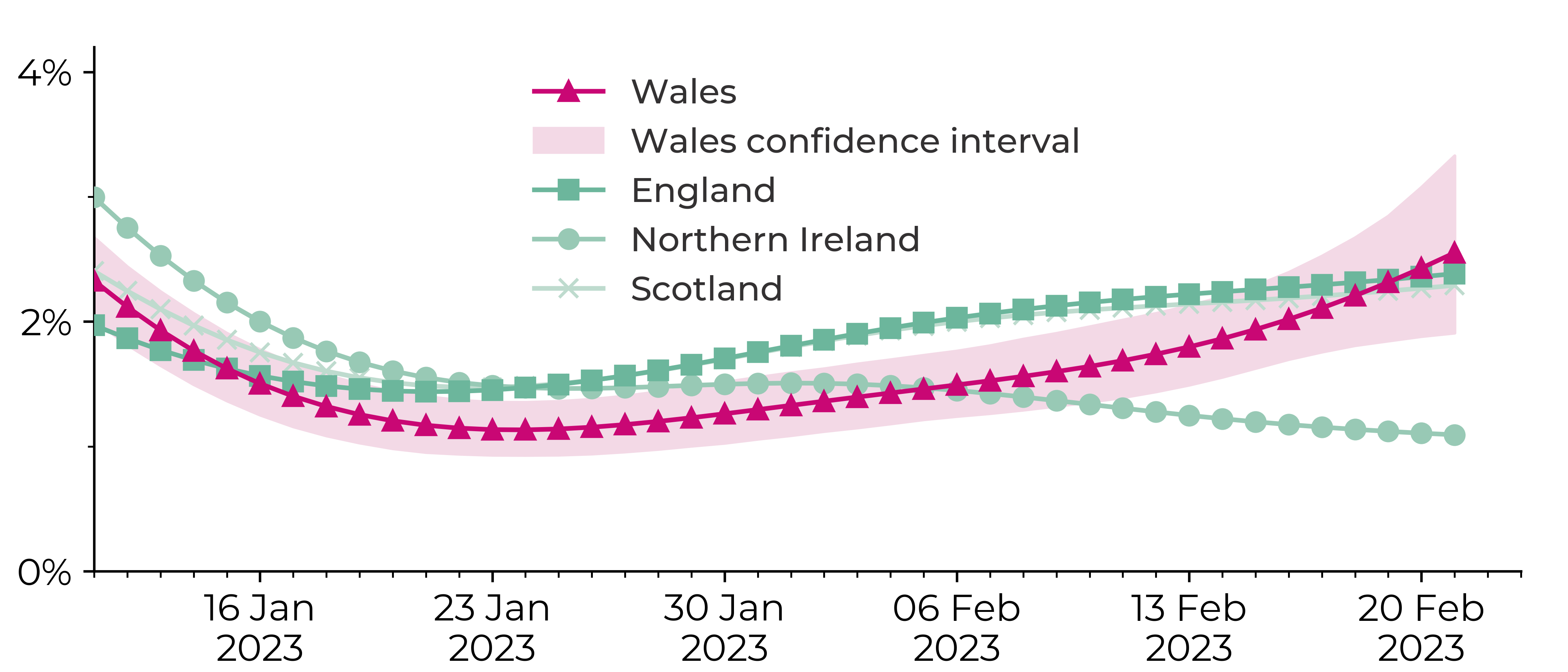
Source: COVID-19 Infection survey, ONS. The pink shaded area represents the 95% credible interval for Wales.
The Welsh Government note that the estimates are based on a relatively low number of positive tests, so we should be cautious about over-interpreting any small movements in the latest trend. There also isn’t the same level of totality around figures as when there was mass testing; the figures may still be useful to signal wider trends, but will be subject to shifts in daily and weekly rates.
In the week ending 28 February 2023 the percentage of people testing positive increased in Scotland. However, the trends were uncertain in England, Wales and Northern Ireland.
The most recent estimated figures indicate:
- Wales: 66,200 – around 2.14% or 1 in 45 of the population;
- England: 1,333,400 - around 2.38% or 1 in 40 of the population;
- Northern Ireland: 24,700 – around 1.35% or 1 in 75 of the population; and
- Scotland: 128,400 - around 2.44% or 1 in 40 of the population.
COVID-19 deaths
ONS data shows the COVID-19 age-standardised mortality rate for Wales was 58.0 deaths per 100,000 people in January 2023, compared to 82.9 deaths per 100,000 people in January 2022. The rate in England was 42.8 deaths per 100,000 in January 2023 compared to 81.2 per 100,000 in January 2022.
In the leading causes shown below, COVID-19 was the 7th leading cause of death in Wales in January 2023.
Number of deaths registered in Wales for selected leading causes, January 2023
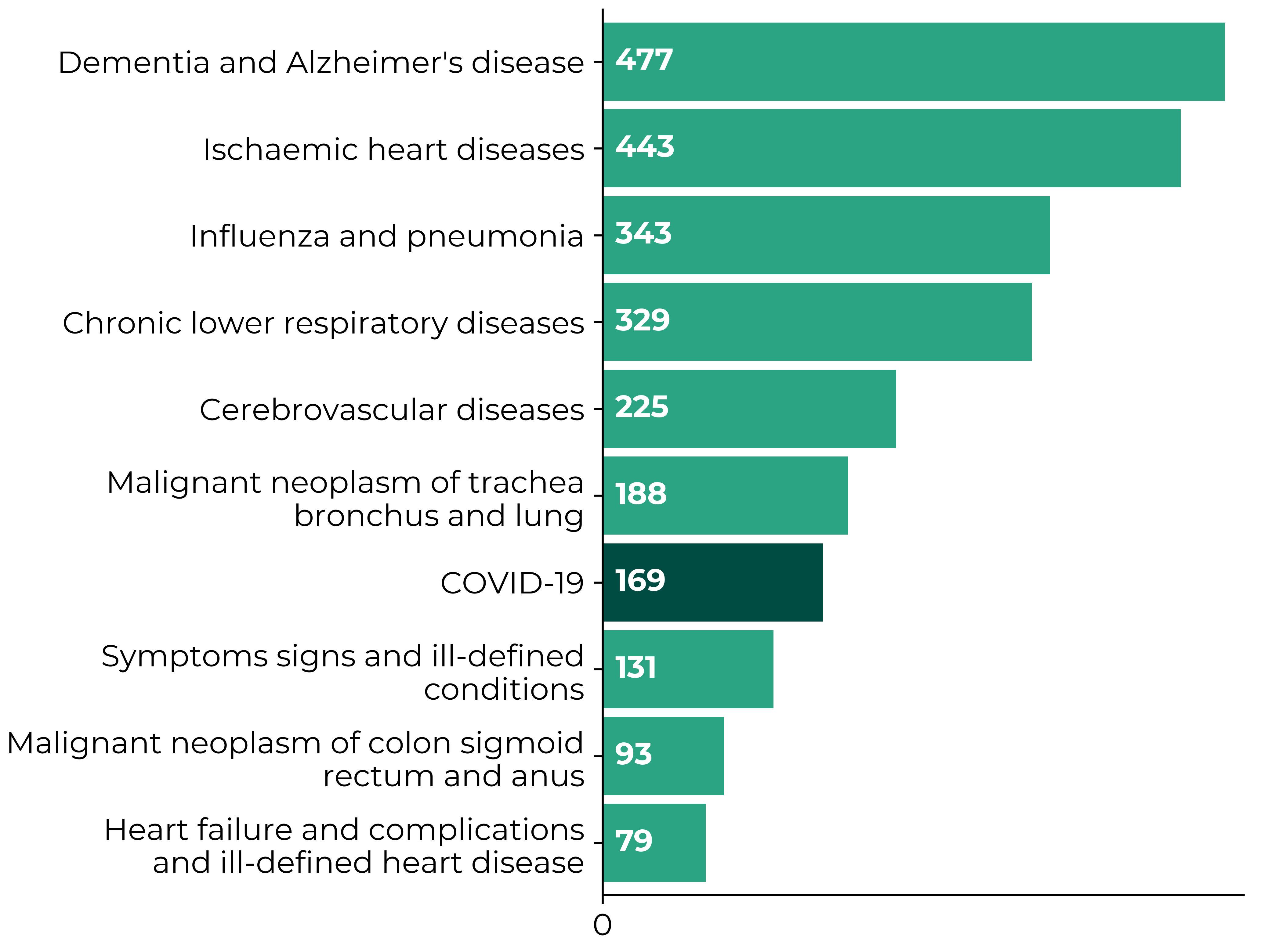
Source: Office for National Statistics
ONS registered deaths include people who died in the community and in hospital. The data shows how many more people have died from all causes than we would usually expect by comparing to a 5-year average. 'Excess deaths' are increases above the 5-year average.
Weekly registered deaths and excess deaths
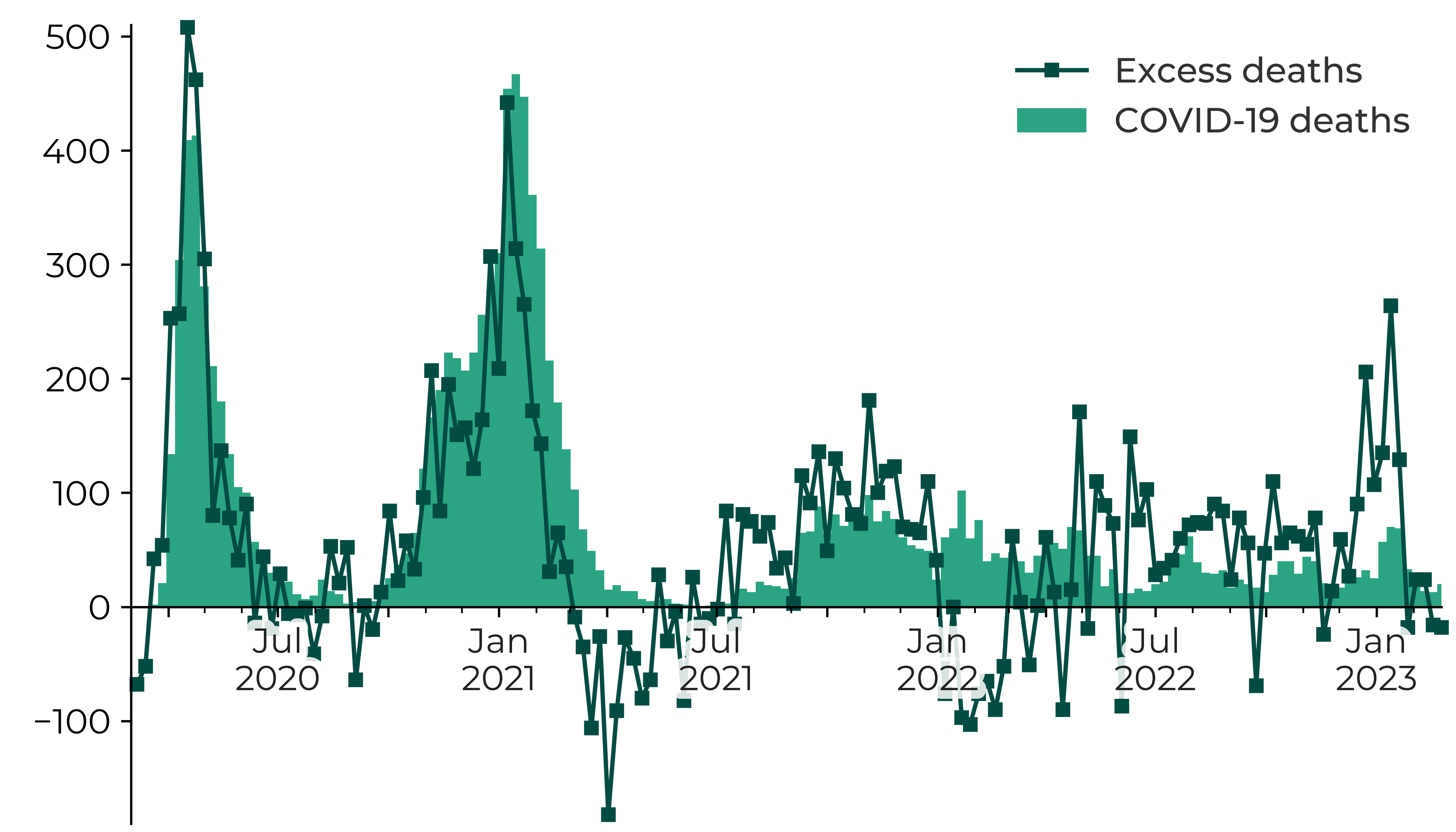
Source: Office for National Statistics
The 2015 to 2019 five-year average was used to compare against deaths registered in 2020 and 2021. Deaths registered in 2022 are compared with the 2016, 2017, 2018, 2019 and 2021 five-year average. Deaths registered in 2023 are compared with the 2017, 2018, 2019, 2021 and 2022 five-year average.
COVID-19 variants
Since mid-January 2023, the Omicron variant BA.2.75 and its sub-lineages have comprised the largest proportion of all sequenced infections. In the week ending 26 February 2023, of all sequenced infections:
- 2.75 and its sub-lineages (including XBB and CH.1.1 and their respective sub-lineages) comprised 85.8%
- the sub-lineage CH.1.1 and its sub-lineages comprised 19.7%
- the sub-lineage XBB.1.5 and its sub-lineages comprised 50.4%, and the sub-lineage XBB.1.9 and its sub-lineages comprised 10.6%
- 1 (a sub-lineage of Omicron BA.5) and its sub-lineages comprised 11.7%
PHW publish weekly data on variants of concern and variants under investigation for Wales
Long COVID
Long COVID is when symptoms continue, or new symptoms develop, more than 12 weeks after infection with COVID-19. It’s still not clear about how many are affected.
The most recent ONS figures estimate there were 2.0 million people in UK private households (3.0% of the population) experiencing self-reported long COVID as of 2 January 2023. The most recent estimate for Wales stood at 95,000 as of 2 January 2023.
Demand on health care services
Although the numbers of COVID-19 patients in hospital are lower than previous peaks the data shows there has been continued pressure on services through attendances at A and E departments and emergency hospital admissions. On 8 March some 94.7% of general and acute beds in Welsh hospitals were occupied.
Number of people in hospital with COVID-19 (includes suspected, confirmed and recovering cases)
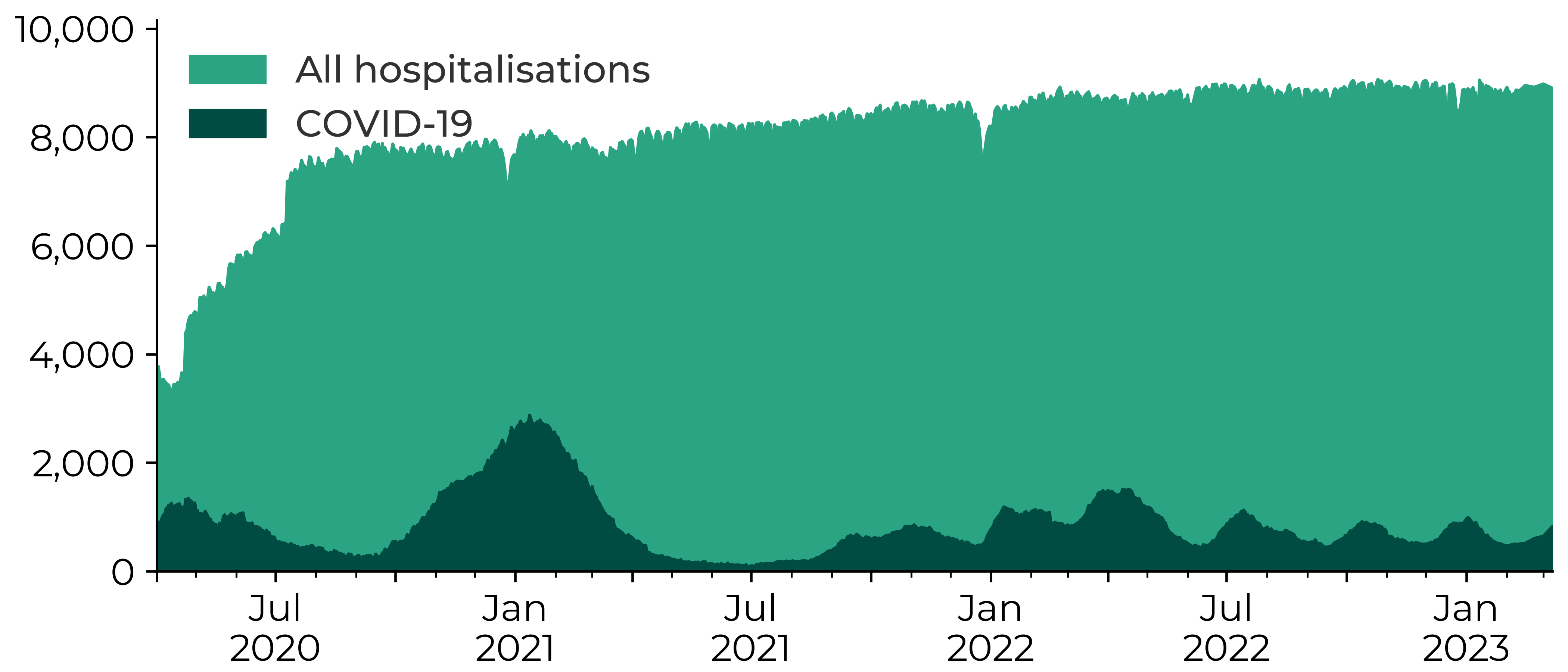
Source: Welsh Government
The UK COVID-19 vaccination programme
On 7 March 2023 the Joint Committee on Vaccination and Immunisation (JCVI) published its advice on a Spring 2023 COVID-19 vaccination campaign. Welsh Government has accepted this advice and from 1 April the vaccine will be offered to:
- adults aged 75 and over
- residents in care homes for older adults, and
- individuals aged 5 years and over who are immunosuppressed
The statement also sets out that:
{…}the universal offer of a COVID-19 booster will end on 31st March. Higher risk groups and people who develop a new health condition that makes them eligible will still be able to receive their booster vaccine, if advised by a doctor or other clinician.
People who have not received their primary course of vaccinations will be able to do so until 30th June. The JCVI has recommended that the high level of population immunity has enabled the changes.
As well as the spring booster programme, there will be an autumn booster programme later this year, following further advice from the JCVI.
The Minister for Health and Social Services noted also that “the primary aim of the COVID-19 vaccination programme continues to be the prevention of severe disease (hospitalisation and mortality) arising from COVID-19”. Health and Care Research Wales have published a rapid review on the effect of vaccination on COVID-19 transmission which concludes that:
The COVID-19 vaccination programme has been successful in reducing the impact of severe COVID-19 disease on hospitalisation, morbidity and mortality. However, the effectiveness of COVID-19 vaccines against transmission is less clear, in particular for people with milder or asymptomatic infection, or in an era of new variants.
The charts below show the level of uptake of the earlier vaccine programmes, as well as the autumn booster.
Number of people who have received a vaccination by dose
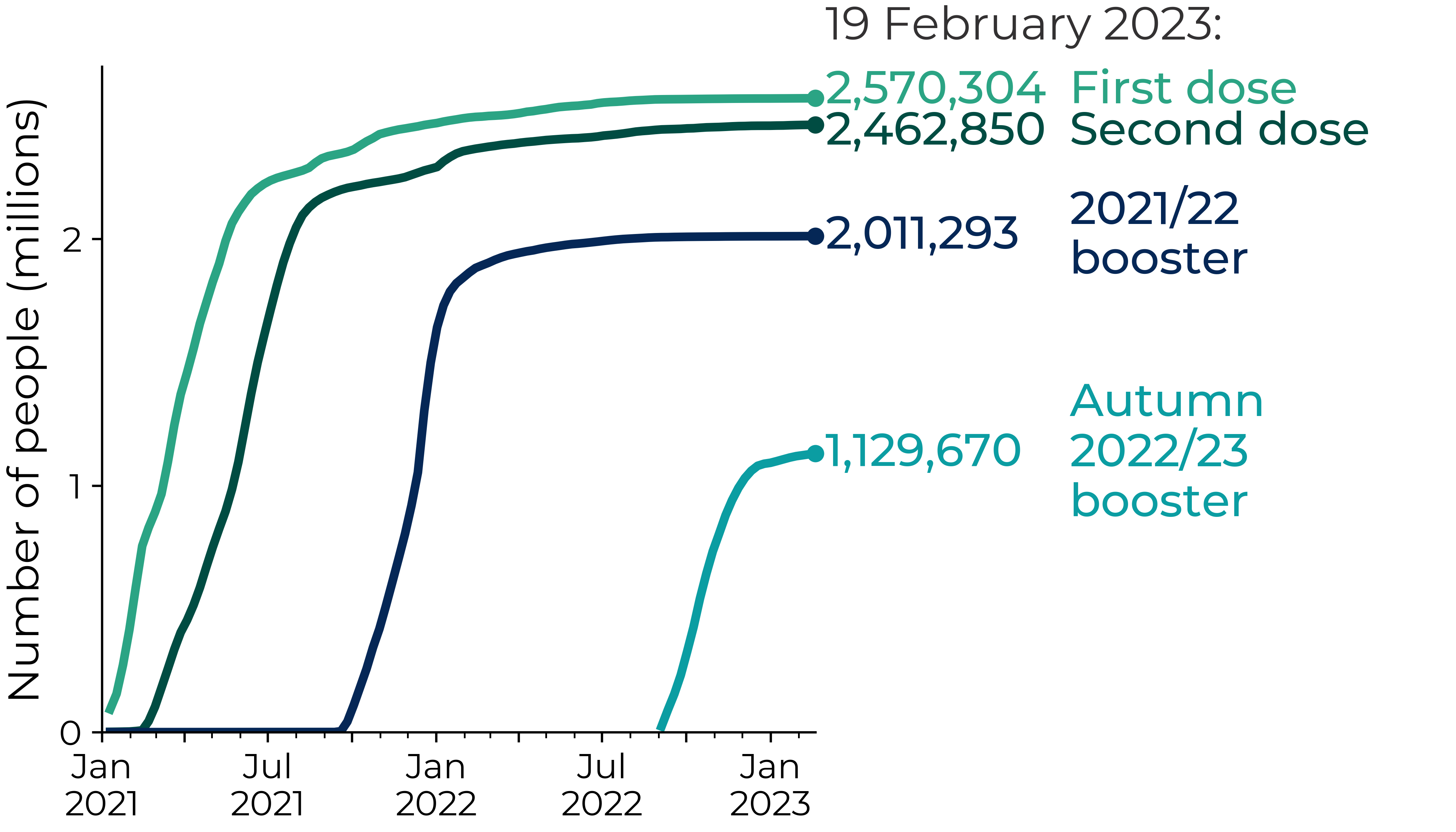
Source: Public Health Wales
Uptake of Autumn 2022/23 booster by priority group
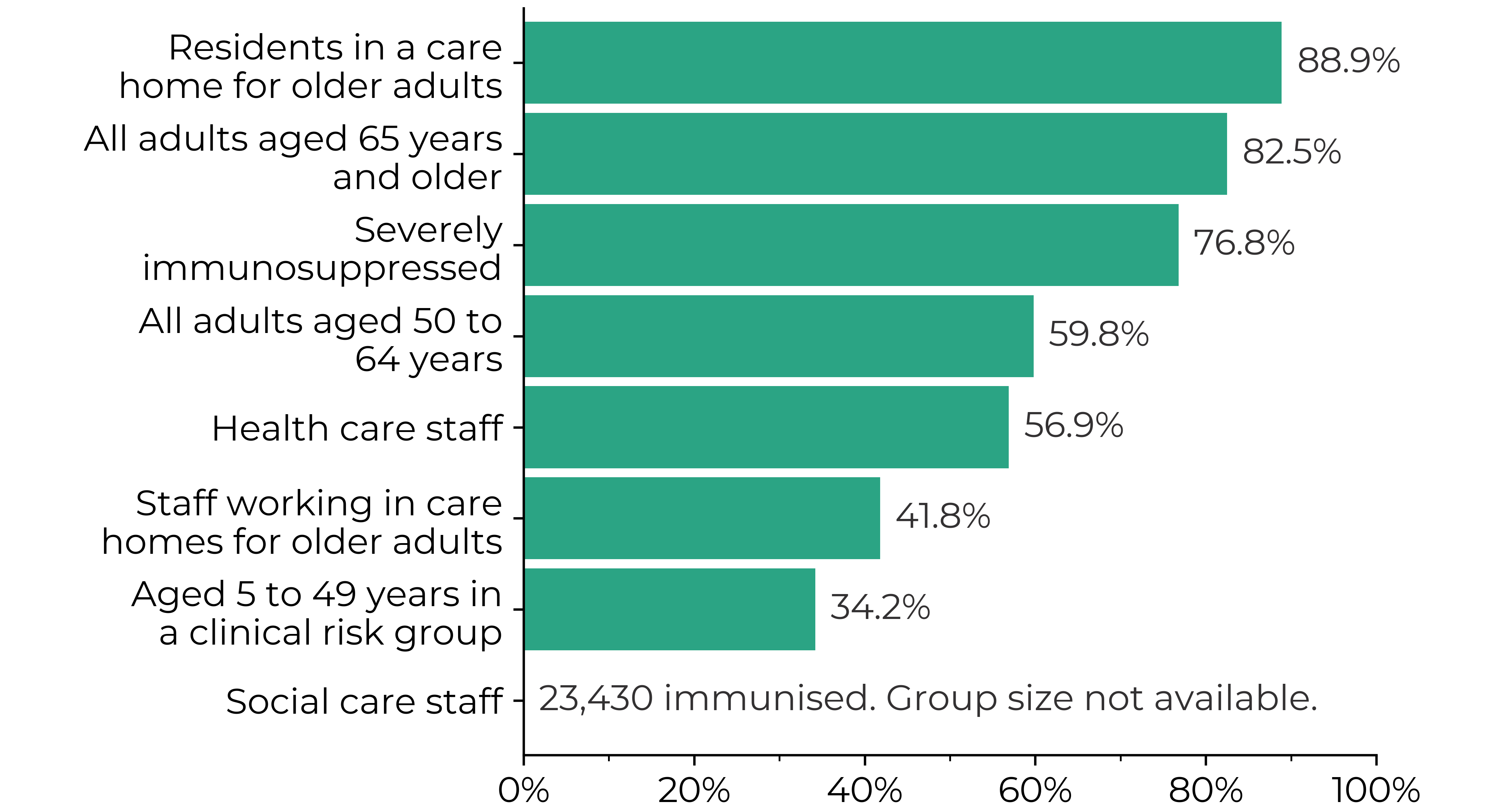
Source: Public Health Wales
Note: Public Health Wales (PHW) publish a range of data relating to COVID-19, including information on vaccinations, mortality, variants, hospitalisation, hospital-acquired infections, and testing.
The global position
As of 7 March 2023, there have been over 759 million confirmed cases of COVID-19 worldwide, including over 6.9million deaths reported to the WHO. The virus is still active and circulating on a global scale, with around 32,000 deaths a month from COVID-19 worldwide but detection and reporting of new cases vary in reliability across countries. The WHO in January kept COVID-19 as a public health emergency of international concern.
A recent editorial in the British Medical Journal noted the potential risk from new variants of concern, but stressed the role of public health and social measures, vaccines, and therapeutics in managing COVID-19. The editorial also stressed how essential a “coordinated international response” was and that “global vaccine inequity contributes to ongoing disparity of health outcomes and perpetuates the risk of further variants of concern”.
Nonetheless the WHO is hopeful that 2023 may “see the end of the health emergency of international concern".
The Welsh Government’s Technical Advisory Group on 24 February reported that:
Current upwards trends in data on COVID-19 infections and pressures, when compared to previous waves, suggest that another wave could be imminent. This wave would be likely driven by the increasing trend of XBB.1.5 variants. […] Deaths related to COVID-19 remain at low levels in Wales.
The UK Health Security Agency (UKHSA) has released a new variant technical briefing for England which reports some emerging Omicron variants but these are low in prevalence and there’s no evidence of increased risk of hospital admission.
Article by Paul Worthington, Joe Wilkes, Božo Lugonja and Helen Jones, Senedd Research, Welsh Parliament






